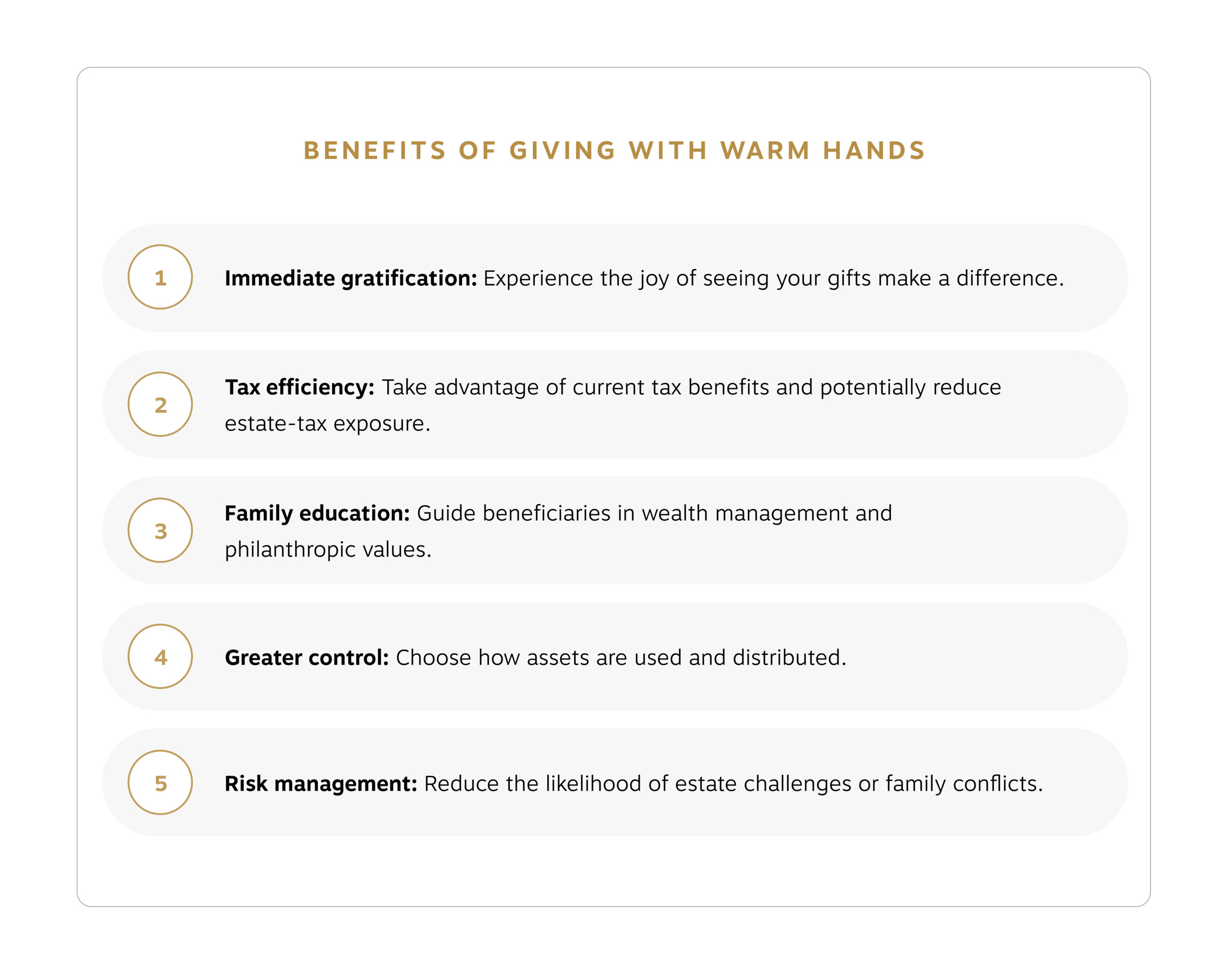Monthly
Newsletter
February 2025

Is Fear Freezing Your Portfolio?
Risk Management
In times of uncertainty or high market volatility, many investors freeze. The impulse to hit pause or even to run for cover is natural. But doing nothing or overcompensating for those fears can put your long-term wealth plan off course. This is where rebalancing comes in.
Understanding Portfolio Drift
Think of rebalancing as routine maintenance for your investment portfolio. Just as your car needs regular oil changes to run smoothly, your portfolio needs periodic adjustments to maintain its intended risk level. Market movements naturally push your asset allocation away from your targets over time. When stocks surge, they can end up occupying a larger portion of your portfolio than planned. Conversely, during market downturns, your stock allocation may shrink below your target level.
This drift in asset allocation isn’t just a technical concern—it can significantly impact your portfolio’s risk level. Imagine you started with a balanced portfolio of 60% stocks and 40% bonds. After a strong bull market for stocks, your allocation might shift to 75% stocks and 25% bonds. You’re now carrying substantially more risk than your original strategy called for, making you more vulnerable to market corrections.
Benefiting From Systematic Rebalancing
This is where regular rebalancing serves as your risk management tool. By systematically selling some of your winners and buying assets that have underperformed, you’re essentially buying low and selling high. More importantly, you’re ensuring your portfolio maintains the risk level that aligns with your financial goals and comfort.
Diversification plays a crucial role in any rebalancing strategy. A well-diversified portfolio spreads risk across different asset classes—stocks, bonds, cash and alternatives. Each asset class tends to perform differently under changing market conditions, providing a natural buffer against volatility. Rebalancing helps maintain these diversification benefits by preventing any single asset class from dominating your portfolio.
Managing and Mitigating Risk
During market downturns, rebalancing might mean buying stocks when others are fearful—a psychologically challenging but often rewarding move. Conversely, during bull markets, it requires the discipline to trim your winning positions and reinvest in less exciting assets. This systematic approach helps remove emotion from the investment equation, keeping you focused on your long-term strategy rather than reacting to market fears or enthusiasm.
The beauty of rebalancing lies in its simplicity. You don’t need to predict market movements or make complex tactical decisions (like when to go all to cash and when to get back into the markets). Instead, you’re following a predetermined strategy that automatically adjusts your portfolio back to its target allocations. Whether you choose to rebalance on a fixed schedule or when allocations drift beyond certain thresholds, the key is maintaining consistency.
Rebalancing can have a downside—in taxable accounts, realizing gains by selling your winners will create a tax liability. Picking a threshold-based strategy could mean years of inactivity or periods of more rapid trading. Depending on how your portfolio is built or what you own, you may also pay fees on transactions. Your team can help you account for these elements in your portfolio strategy.
Staying the Course
Remember, eliminating risk is impossible in investing. Even moving 100% to cash carries risk; you could miss out on a market upturn, see the value of your savings erode due to inflation, or fall short of your goals altogether. Rebalancing helps you manage these risks by maintaining your chosen strategy through different market environments. It’s about having the right tools and processes in place so you can act decisively rather than be frozen by uncertainty.
The newest episode of RWA’s The Human Side of Wealth video series is live! This month, Chief Investment Officer Joseph Powers reviews themes impacting the markets in 2025, including AI, tariffs, deregulation and more. Click here to watch now.

What To Do if Insurers Leave You in the Cold
Insurance Planning
If you feel like you are getting the cold shoulder from your home insurance provider, you are not alone. Homeowners across the United States are facing a double threat in the insurance market: soaring rates and the risk of losing coverage altogether. Recent data paints a stark picture: Insurance premiums jumped 33% from 2020 to 2023, according to the National Bureau of Economic Research. Florida leads all states, as average annual premiums were close to $11,000 in 2024, while Louisiana homeowners were facing rates of $7,800—a 23% increase in a single year, according to Insurify.
The problem goes beyond just rising costs. Insurance companies are also dropping coverage in high-risk areas, with nonrenewal notices surging by nearly 30% from 2018 to 2022, according to a Treasury report examining 246 million policies nationwide. Florida, Louisiana and North Carolina are seeing the highest nonrenewal rates, surpassing even California’s widely publicized insurance crisis, according to a Senate report released in December. In some areas, like Florida’s Glades County, insurers dropped 16% of homeowners in 2023 alone.
Major insurers like State Farm, Allstate and Farmers are pulling out of states they view as too risky, while others are dramatically reducing their coverage areas. This retreat, combined with inflation and more frequent severe weather events, has left many homeowners scrambling to find affordable coverage—or any coverage at all.
If you are facing these challenges (or expect to), understanding your options is crucial. The following checklist has guidance to protect yourself against rate hikes or prepare for loss of coverage if insurers leave you out in the cold.
If You’re Facing Rate Increases
Document Your Home (Do This Now)
- Take detailed photos/videos of your property and its safety features.
- Get a professional home inspection with special attention to roof, electrical and plumbing.
- Compile maintenance records and home improvement receipts.
- Document any claims history (or lack thereof).
Shop for New Coverage
- Start comparing rates three to four months before renewal.
- Contact multiple carriers and an independent broker.
- Research your state’s FAIR (Fair Access to Insurance Requirements) plan or insurance pools.
- Consider higher deductibles to lower premiums.
If You Get Dropped
Take Immediate Action
- Document the cancellation notice and contact your mortgage company.
- Call your state’s insurance department about your rights.
- Start applications with new carriers immediately.
- Check eligibility for state-backed insurance programs.
Explore Alternative Coverage Options
- Split coverage between carriers (separate wind/fire/flood policies) or pools.
- Look into surplus lines carriers (more expensive but they may be willing to insure).
- Check state-specific high-risk pools.
Last Resort Options
Take These Steps if Insurance Becomes Unaffordable
- Research self-insurance requirements in your state (see more on this below).
- Consider moving to a lower-risk area.
- Look into creating an LLC to own property.
- Investigate hybrid options (high deductible + savings fund).
Research Government and State Programs
- Check state-sponsored insurance programs.
- Research government assistance to make your home more insurable (home hardening).
- Look into FEMA or state grants.
- Contact your local consumer protection office.
What Is Self-Insurance?
Self-insurance means taking on the financial risk yourself instead of transferring it to an insurance company.
This can work several ways:
- Pure self-insurance: You set aside enough money to cover potential losses. For example, if your home is worth $400,000, you would need to maintain a fund large enough to repair or rebuild in case of a disaster. This often requires either:
- Paying off your mortgage (since mortgage companies usually require insurance)
- Maintaining a very large, dedicated savings account/investment fund
- Partial self-insurance: This involves taking a much higher deductible (like $25,000 or $50,000) in exchange for lower premiums and maintaining a fund to cover that deductible.
- Formal self-insurance: This means creating a legal structure (like a captive insurance company) that acts as your own insurance company. This is more common for businesses but is sometimes used by wealthy individuals with multiple properties.
Important notes about self-insurance:
- It’s rarely allowed with an active mortgage.
- Some states require proof of ability to self-insure.
- You need significant liquid assets.
- You’re taking on all the risk yourself—there is no safety net.
- You still might need liability coverage.
Self-insurance is usually a last resort when traditional insurance becomes unavailable or unaffordable. It requires careful financial planning and significant resources to put in place.
Remember: Whether you’re shopping around for more affordable coverage or you’re worried that you may be dropped, start the process early. Options become limited if you wait until the last minute or if your policy lapses. While RWA Wealth Partners does not sell insurance, our team can review your coverage and help you budget for self-insurance or additional lines as needed.

Giving With Warm Hands
Legacy Planning
You may have heard the adage that “it’s better to give with warm hands than with cold ones.” This wisdom captures a growing trend in legacy planning: choosing to share wealth during your lifetime rather than waiting until after you’re gone. Giving with warm hands allows you to witness the impact of your generosity, guide how your assets are used, and potentially realize tax benefits while supporting loved ones and cherished causes.
This philosophy is not hard to grasp, but you have a plethora of options for putting it into place, each of which can be tailored to your specific goals. Let’s look at a few of the most popular choices, broken down by three broad objectives: transferring wealth to your family, philanthropy and a mix of the two.
Family Wealth Transfer
Annual exclusion gifts. The simplest approach is direct gifting, using the annual gift tax exclusion ($19,000 per recipient in 2025). Married couples can combine their exclusions, allowing for significant tax-free transfers.
Direct payment of medical and education expenses. You can make unlimited payments directly to medical providers or educational institutions on behalf of others for qualified expenses without incurring a taxable gift or affecting your $19,000 gift exclusion.
Gifts of lifetime exemption. The lifetime exemption is the total amount of money or property that an individual can transfer to others during their lifetime as gifts or at the time of their death without incurring any federal or estate tax.
In 2025, an individual can gift up to a lifetime exemption of $13.99 million. The exemption is calculated per person, so a married couple has double that. Gifting between spouses is unlimited and usually doesn’t require a gift tax return.
If you have an estate approaching or above the $14 million level as an individual or $28 million as a couple, making gifts today can be an especially powerful wealth transfer technique. The future growth of those gifted assets occurs outside of your taxable estate. Gifts can be made directly to loved ones or into trusts for their benefit.
Grantor retained annuity trusts (GRATs). GRATs provide a way to transfer appreciation on assets to the next generation while retaining an income stream for yourself. This vehicle is particularly effective in low-interest-rate environments and for assets expected to appreciate significantly.
Charitable Giving Strategies
Donor-advised funds (DAFs). DAFs offer immediate tax benefits, have the potential to grow over time and allow you to recommend grants to charities over time. They’re an excellent way to involve family members in philanthropic decisions and create a lasting legacy of giving.
Private foundations. For substantial charitable commitments, private foundations offer maximum control and visibility. They can employ family members and create a permanent family legacy while supporting chosen causes.
Hybrid Approaches
Charitable lead trusts (CLTs). CLTs provide current income to charities while ultimately transferring assets to family members at reduced gift tax values. This structure benefits both charitable causes and family beneficiaries.
Charitable remainder trusts (CRTs). CRTs combine charitable giving with family wealth transfer. They provide income to family members for a period of time, with the remainder going to charity. This structure offers current tax benefits while benefiting both family and charitable beneficiaries.

Crafting Your Plan
The key to successful lifetime giving is careful planning that aligns with your overall financial goals. Remember that different giving vehicles offer varying levels of control, tax benefits and complexity—some will require assistance from a lawyer. Your team can help guide you in selecting and implementing the strategies that best fit your situation.
By giving with warm hands, you can craft a legacy that benefits both family and society while maintaining the flexibility to adjust your approach as circumstances change. Contact your team to learn more and get started.
Archives
Never miss an issue
By providing your email address you consent to receive
marketing content from RWA Wealth Partners, LLC.